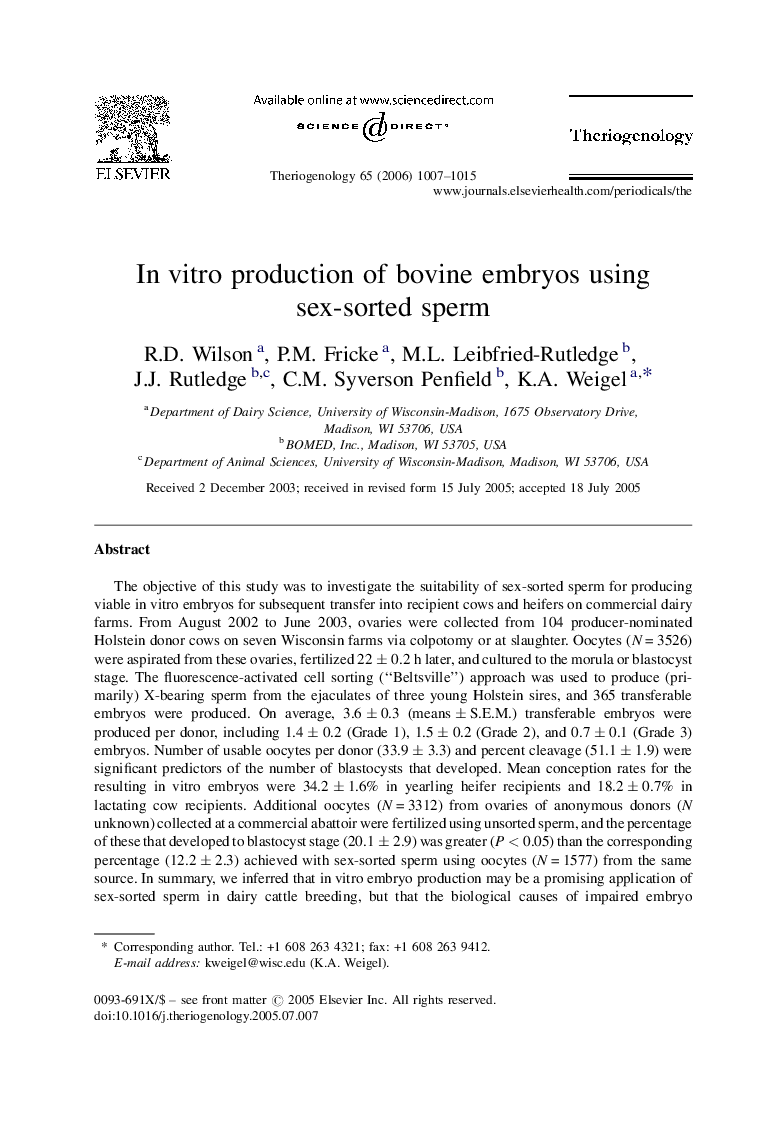| کد مقاله | کد نشریه | سال انتشار | مقاله انگلیسی | نسخه تمام متن |
|---|---|---|---|---|
| 2097182 | 1082202 | 2006 | 9 صفحه PDF | دانلود رایگان |

The objective of this study was to investigate the suitability of sex-sorted sperm for producing viable in vitro embryos for subsequent transfer into recipient cows and heifers on commercial dairy farms. From August 2002 to June 2003, ovaries were collected from 104 producer-nominated Holstein donor cows on seven Wisconsin farms via colpotomy or at slaughter. Oocytes (N = 3526) were aspirated from these ovaries, fertilized 22 ± 0.2 h later, and cultured to the morula or blastocyst stage. The fluorescence-activated cell sorting (“Beltsville”) approach was used to produce (primarily) X-bearing sperm from the ejaculates of three young Holstein sires, and 365 transferable embryos were produced. On average, 3.6 ± 0.3 (means ± S.E.M.) transferable embryos were produced per donor, including 1.4 ± 0.2 (Grade 1), 1.5 ± 0.2 (Grade 2), and 0.7 ± 0.1 (Grade 3) embryos. Number of usable oocytes per donor (33.9 ± 3.3) and percent cleavage (51.1 ± 1.9) were significant predictors of the number of blastocysts that developed. Mean conception rates for the resulting in vitro embryos were 34.2 ± 1.6% in yearling heifer recipients and 18.2 ± 0.7% in lactating cow recipients. Additional oocytes (N = 3312) from ovaries of anonymous donors (N unknown) collected at a commercial abattoir were fertilized using unsorted sperm, and the percentage of these that developed to blastocyst stage (20.1 ± 2.9) was greater (P < 0.05) than the corresponding percentage (12.2 ± 2.3) achieved with sex-sorted sperm using oocytes (N = 1577) from the same source. In summary, we inferred that in vitro embryo production may be a promising application of sex-sorted sperm in dairy cattle breeding, but that the biological causes of impaired embryo development in vitro and compromised conception rates of transferred embryos should be further investigated.
Journal: Theriogenology - Volume 65, Issue 6, 1 April 2006, Pages 1007–1015